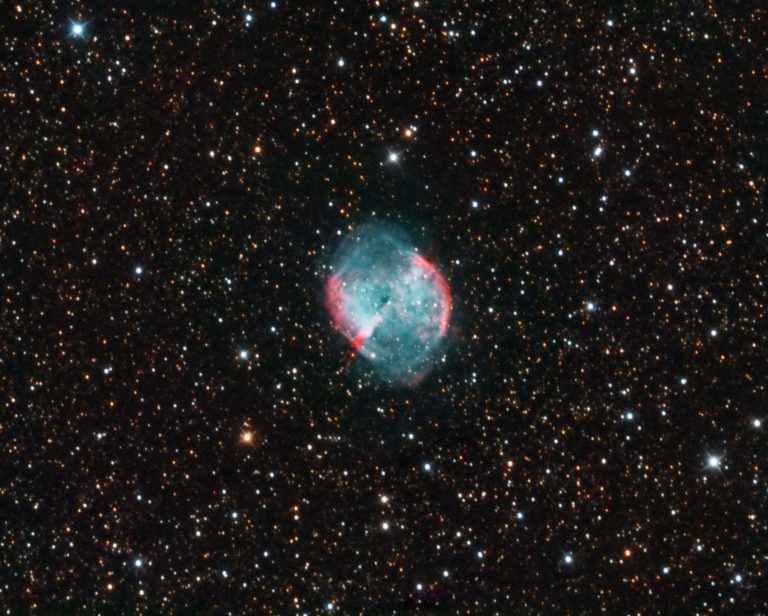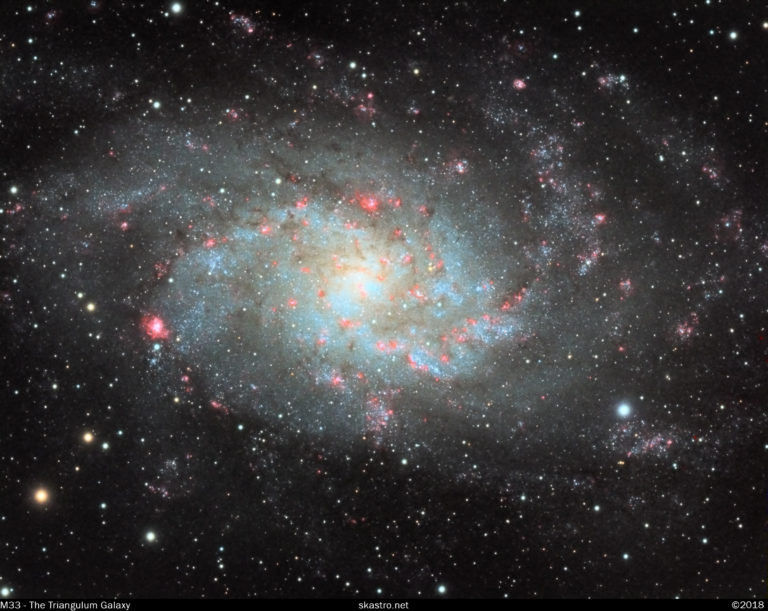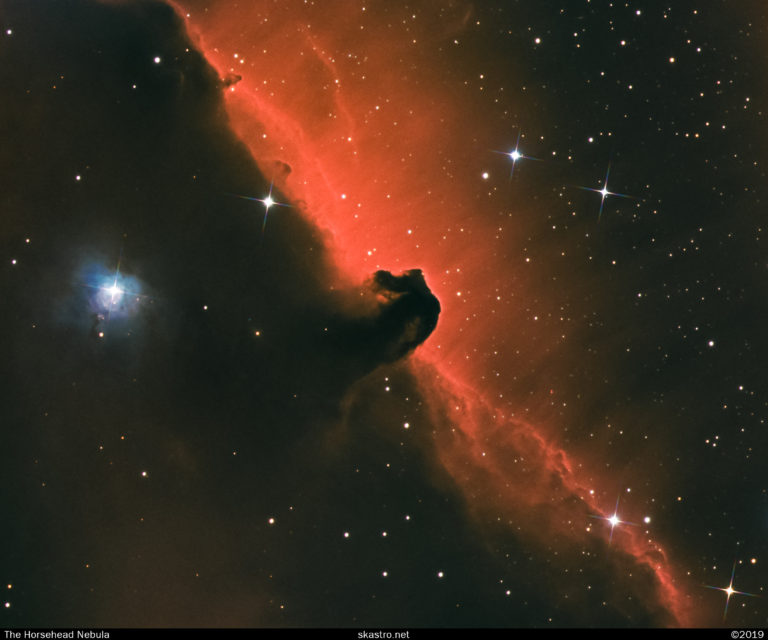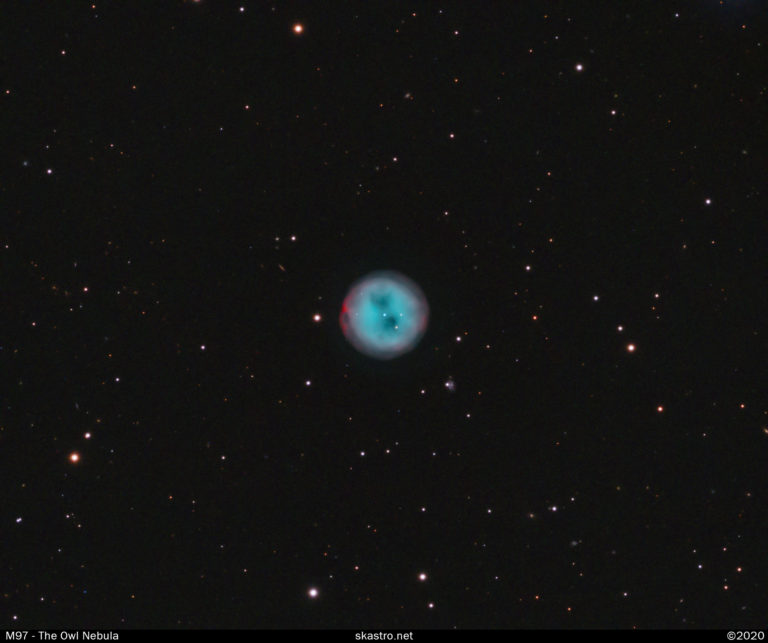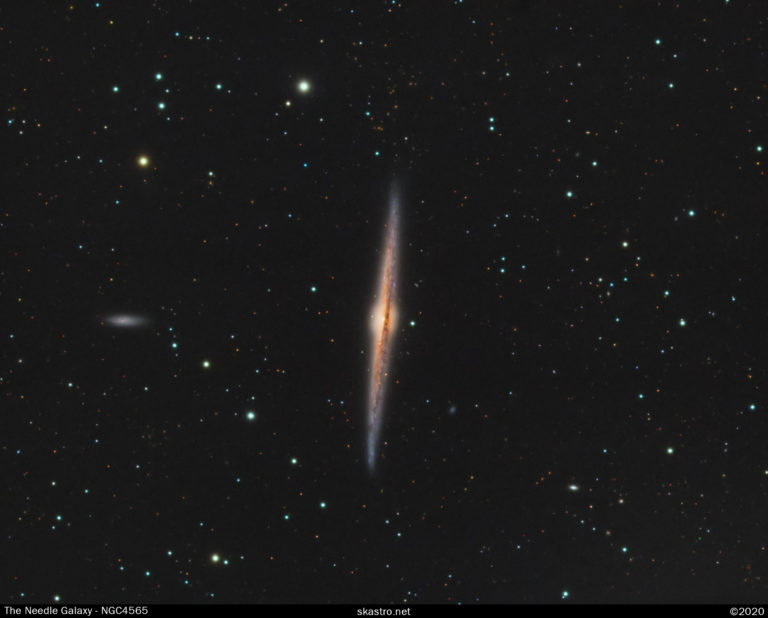M27 is known as The Dumbbell Nebula and is a planetary nebula in the constellation of Vulpecula – The Fox. It is located about 1250 light years away and represents the outer ejected gas envelope of a dying star. This is the first image I took with my CCD camera – Atik460 – on the 28th October 2013. This is a lovely object in the summer and early autumn skies and is very pleasing visually in a pair of binoculars or a telescope. Its brightness and vivid colour make it a perennial favourite object for astro imagers. M27 – The Dumbell Nebula Image Technical Data This is a small dataset taken with my superb Skywatcher ED80 Black Diamond refractor and Atik 460 CCD camera with Baader LRGB filters on an NEQ6 mount, guided with a Skywatcher guidescope and QHY5 (I still have and use this guide setup). This is a…
I have completed several images of the famous Triangulum Galaxy – M33, over the years. This is one of the most photographed objects in the sky and with good reason; it is a beautiful face on spiral galaxy that is the second closest major galaxy after Andromeda. It is bright and colourful and responds well to all types of imaging, whether with a DSLR or CCD, camera lens or telescope. It is probably the second “go to” target to photograph for astro photography beginners after the Andromeda galaxy. The image below is a version captured with the TEC 140 refractor and Atik 460 CCD camera and is the total of about 12 hours of LRGBHa data captured from my backyard observatory in Nottingham, UK in 2018. You can see it fills the frame very nicely. M33 The Triangulum Galaxy M33 Annotated M33 Inverted Image Technical Data Image acquired spring 2018…
The Horsehead Nebula in HaRGB A famous, indeed iconic nebula in the constellation Orion, The Horsehead was not even discovered until 1888 with the advent of astro photography. It is very faint to see visually with a telescope. The image above was captured with my TEC 140 refractor and Atik 460 CCD camera with Astrodon RGB and Ha(3nm) filters. It contains a total of 120 minutes of Ha data and 45 minutes each of RGB data, everything binned 1×1 with 5 minutes exposures.
The Owl Nebula The Owl Nebula is a planetary nebula in the constellation of Ursa Major, one of three planetary nebulae in the Messier catalogue. It is visible as a faint smudge in amateur telescopes but the colours are not evident visually. It is called The Owl Nebula because of the resemblance to the face of an owl. 6 hours and 30 minutes of LRGB in this image M97 Annotated Version The annotated version above shows many distant galaxies in the same field of view as M97, although obviously these are very much more distant. Annotated Version HOO Version The HOO version above shows the Owl Nebula with Hydrogen Alpha mapped as Red channel and OIII mapped to Green and Blue to create the HOO palette colours. 3 hours and 30 minutes of HaOIII. This HOO image could really do with more data added to it in the Ha and…
Located in the constellation of Coma Berenices, The Needle Galaxy is an almost edge on galaxy about 40 million light years away. Much detail can be seen in the dusty lanes of the edge-on spiral arms. This picture is a two year project, off and on. I acquired the luminance data in May 2019 with a view to completing the image then. However, cloudy weather then plagued the UK for weeks, and when it eventually cleared the object had vanished behind neighbouring roofs! So I had to park this image and wait a year to collect the RGB colour data in April 2020 (whilst my country [UK] was in lockdown due to the coronavirus). NGC4565 – The Needle Galaxy Data used to build the image collected with TEC140 refractor and Atik460 CCD camera with Astrodon LRGB Gen 2 E-series filters. I used Off-Axis guiding on my Mesu 200 mount. Data…

